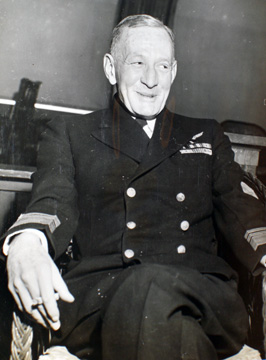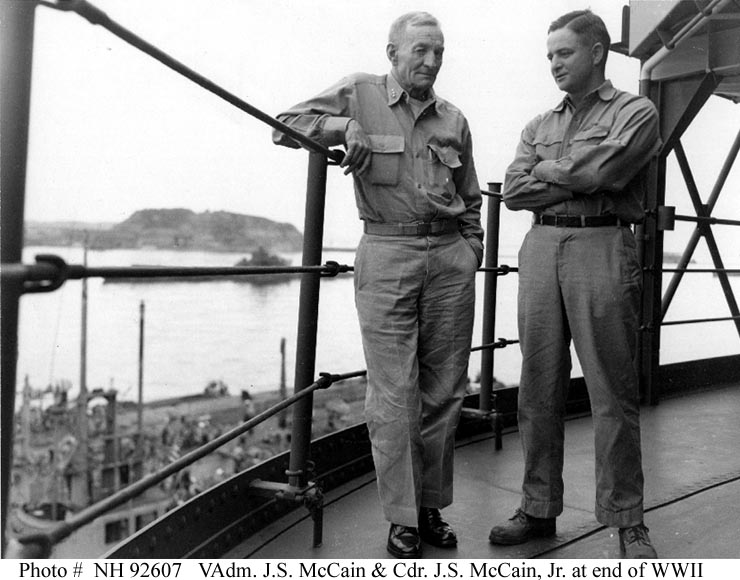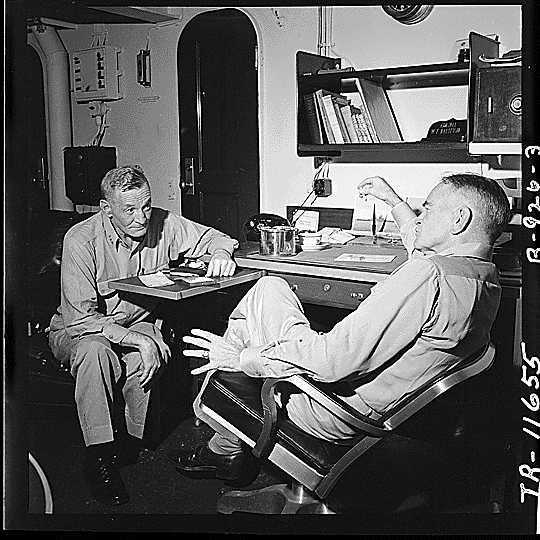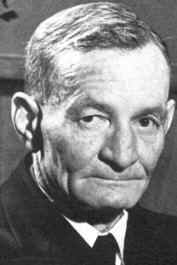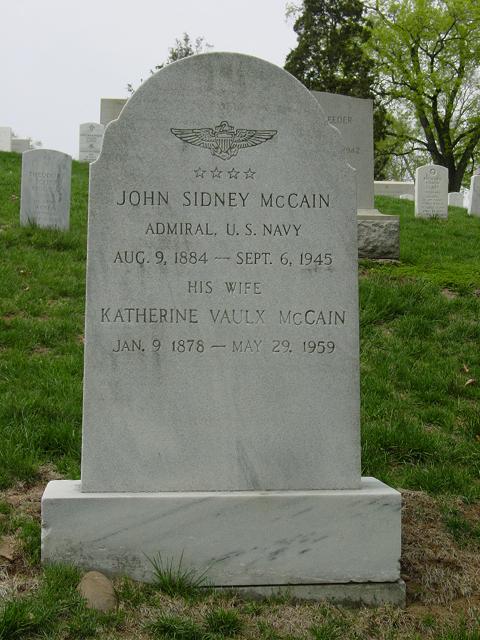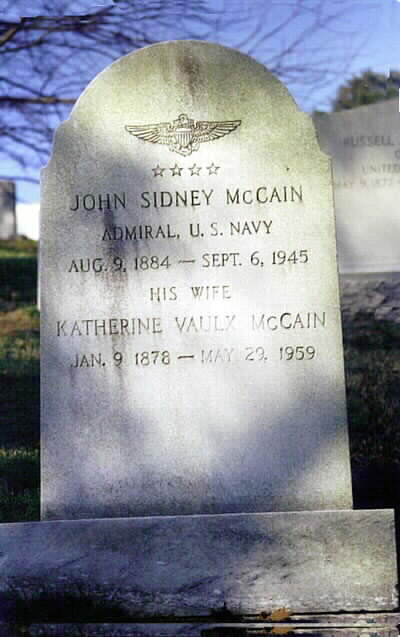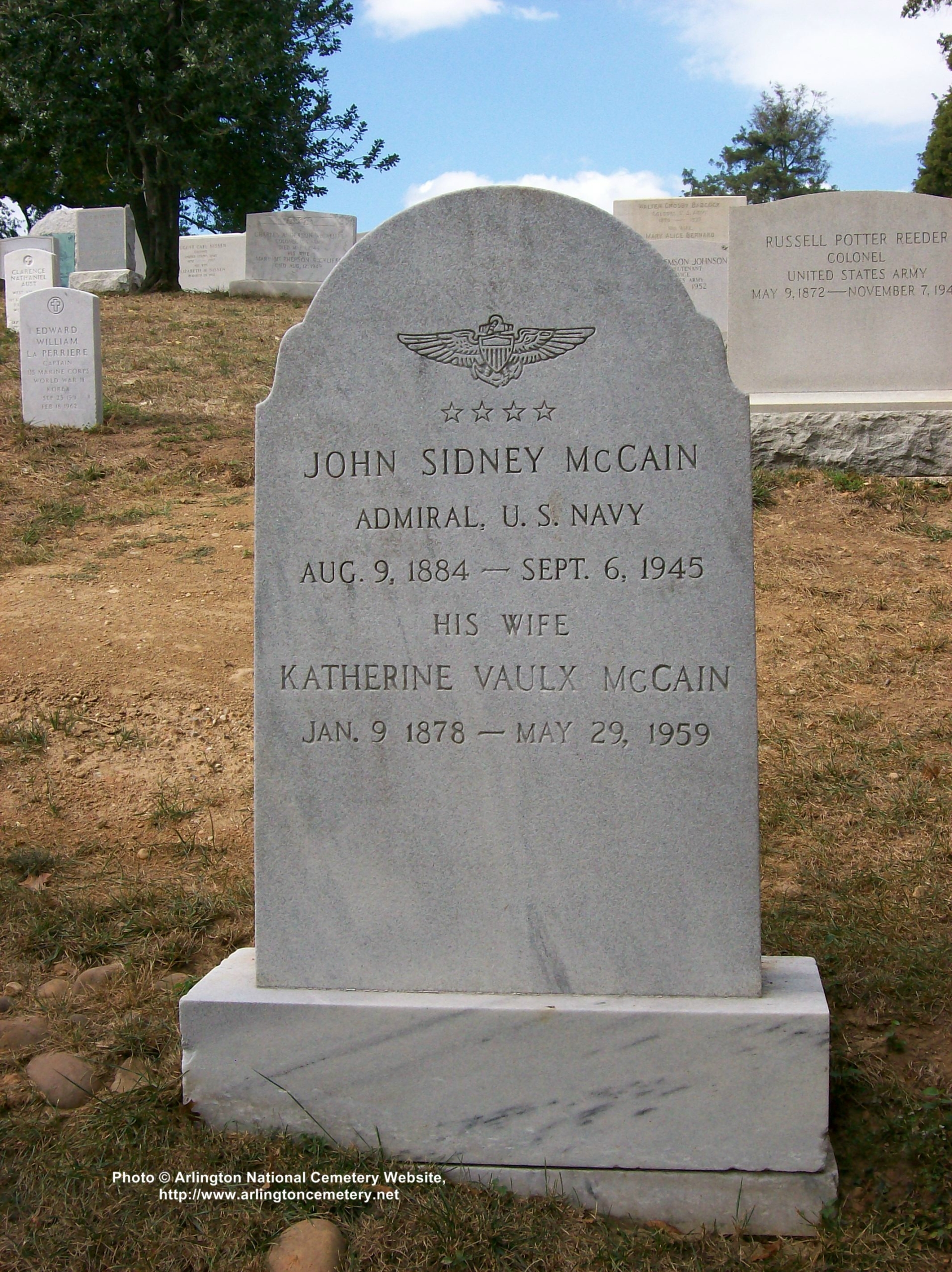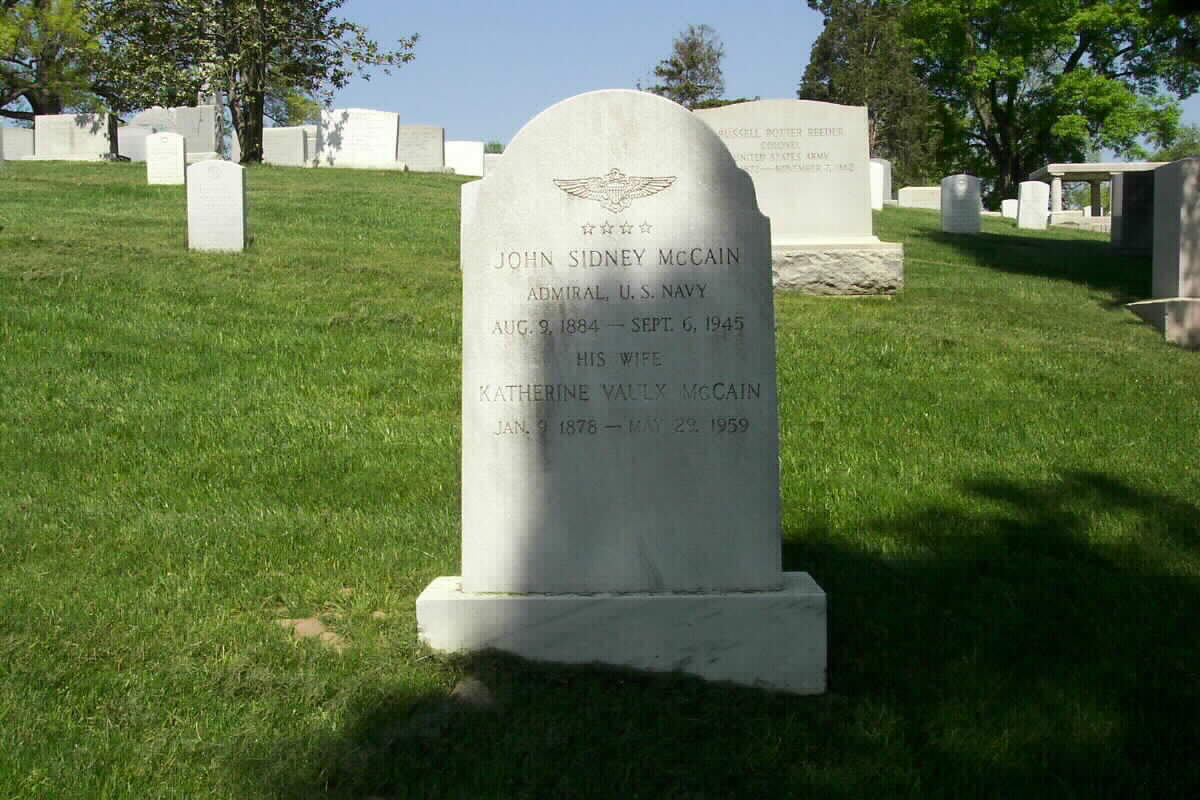John Sidney McCain, Sr. (August 9, 1884–September 6, 1945) was an Admiral in the United States Navy, notable as a commander of the Fast Carrier Task Force in World War II. His son John S. McCain, Jr. was also an admiral (the only father-son pair of full admirals in US history), and his grandson John McCain III, also a naval officer, (retired Navy Captain), is a U.S. Senator from Arizona. All three attended the United States Naval Academy, which his great-grandson, John S. (Jack) McCain IV, is currently attending.
McCain was born in Teoc, Mississippi, and graduated from the Naval Academy in 1906 after attending a few years at the University of Mississippi. His first assignments were on ships of the Asiatic Squadron. During the American occupation of Veracruz in the Mexican Revolution he served in San Diego, and remained on the ship during 1918 while she performed Atlantic escort duty.
In the years between the world wars, McCain served in many ships, including Maryland (BB-46), New Mexico (BB-40), and Nitro (AE-2). His first command was the Sirius (AK-18). In 1936, at the age of 51, he was designated a Naval Aviator, and from 1937 to 1939 he commanded the aircraft carrier Ranger (CV-4), contributing much to the development of carrier tactics for the war to come. For the first year of World War II he served as Commander of Air Forces for Western Sea Frontier and the South Pacific Force. While the majority of his service in this capacity was reportedly excellent, a lapse in McCain’s leadership of his forces significantly contributed to the Allied defeat and heavy losses in one of the naval battles around Guadalcanal. McCain had been requested to conduct extra reconnaissance missions over “The Slot” in the Solomon Islands on August 8, 1942. For reasons never explained, McCain failed to order the missions as requested, and furthermore, didn’t inform the Allied naval commanders at Guadalcanal that they weren’t carried out. As a result, Allied naval forces were surprised and defeated in the Battle of Savo Island on August 9, a defeat that jeopardized the entire Guadalcanal operation for the Allies. In October 1942 McCain became Chief of the Bureau of Aeronautics and in August 1943 rose to the rank of Vice Admiral as Deputy Chief of Naval Operations (Air).
In 1944 he returned to the Pacific Theater, succeeding Marc Mitscher as commander of the Fast Carrier Task Force, which for over a year operated almost continuously in support of the great amphibious operations. McCain’s exceedingly skillful tactics protecting Canberra (CA-70) and Houston (CL-81) in October 1944 earned him the Navy Cross, and the daring forays of his mobile force had much to do with the eventual victory.
Vice Admiral McCain died in September 1945, just after arriving back in the United States, and was posthumously appointed Admiral effective that date. He was buried in Arlington National Cemetery. For his outstanding performance as an air planner and carrier task force commander he was awarded the Distinguished Service Medal with two Gold Stars and for gallantry, he was awarded the Navy Cross; Secretary James Forrestal commented: “He was a fighting man all the way through.”
USS John S. McCain (DDG-56) was named for him and his son.
Born at Carroll County, Mississippi, August 9, 1884, the son of John Sidney and Elizabeth-Ann Young McCain.
He was a student at the University of Mississippi, 1901-02 and graduated from the United States Naval Academy in 1906, from the Navy War College in 1929, from Flight Instruction School, 1936. He married Katherine Vaulx, August 9, 1909. Their children were: John Sidney, James Gordon, Katherine Vaulx.
He was commissioned an Ensign, 1906, and promoted through the grades to Rear Admiral, 1941; Vice Admiral, July 1943. He served as Chief of the Naval Bureau of Aeronautics, September 1942-July 1943; Deputy Chief of Naval Operations for Air, July 1943; Commander, Carrier Task Force 38. Planes under his command took part in action over Peleliu, Leyte Gulf, Philippine Sea, Mindoro, Luzon, Formosa, Ruyukyus and the Japanese homeland. His planes once sank 49 Japanese ships in a single day. Between July 10 and August 14, 1945, his aviators located and destroyed 3,000 grounded enemy planes. He witnessed the Japanese surrender aboard the USS Missouri in Tokyo Bay on September 2, 1945.
He died on September 6, 1945 and was buried in Section 3 (Grave 4356) of Arlington National Cemetery, among other family members, including his brother, William Alexander McCain, Brigadier General, U.S. Army, and John Sidney McCain, Jr., Admiral, United States Navy.
Michael Robert Patterson was born in Arlington and is the son of a former officer of the US Army. So it was no wonder that sooner or later his interests drew him to American history and especially to American military history. Many of his articles can be found on renowned portals like the New York Times, Washingtonpost or Wikipedia.
Reviewed by: Michael Howard

